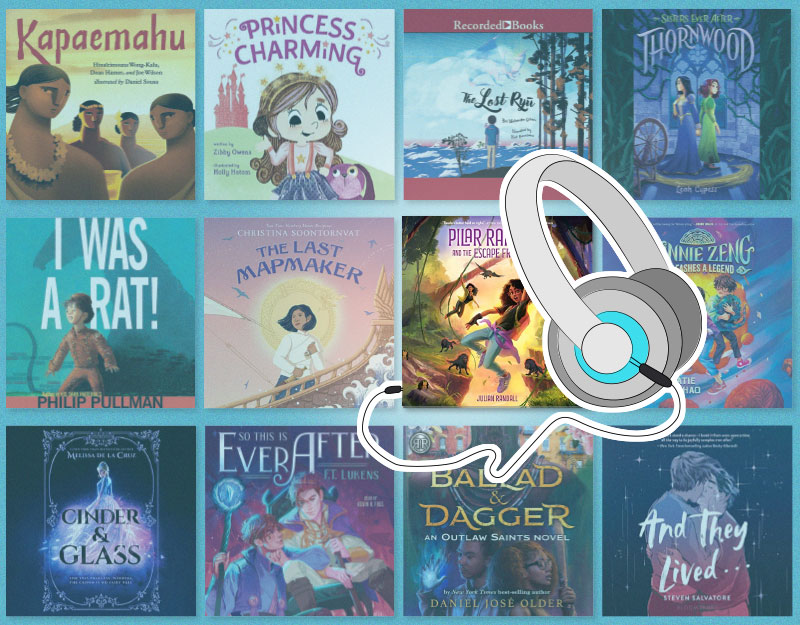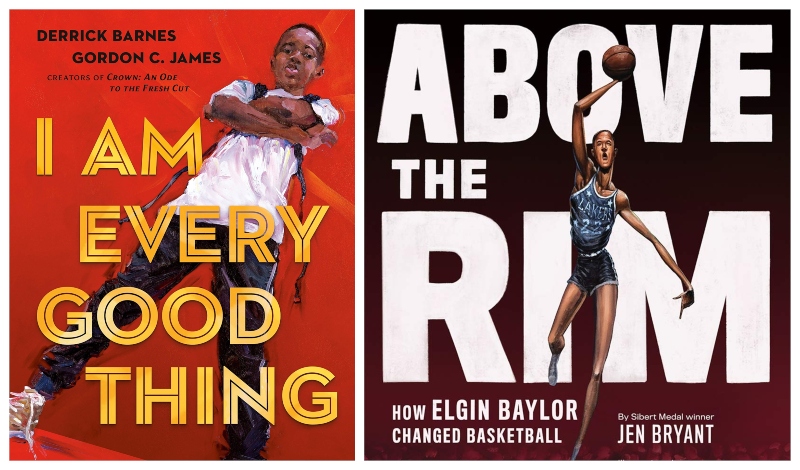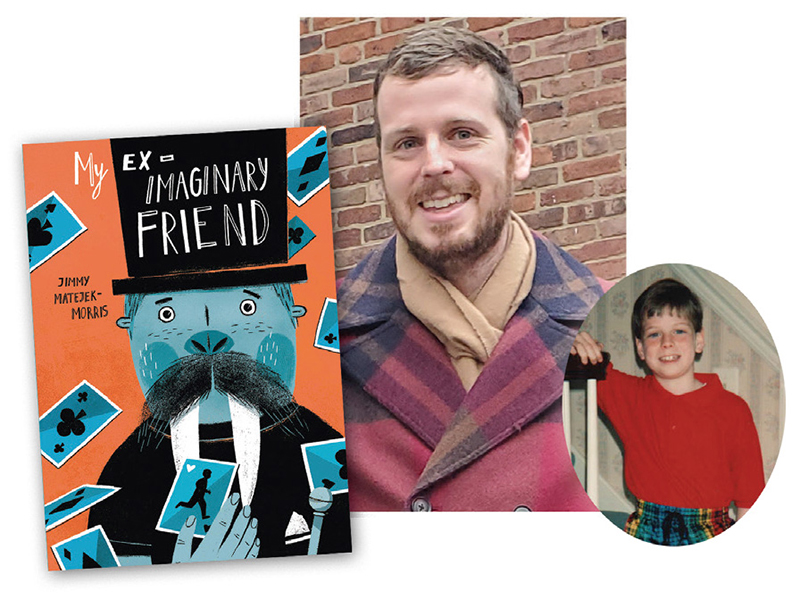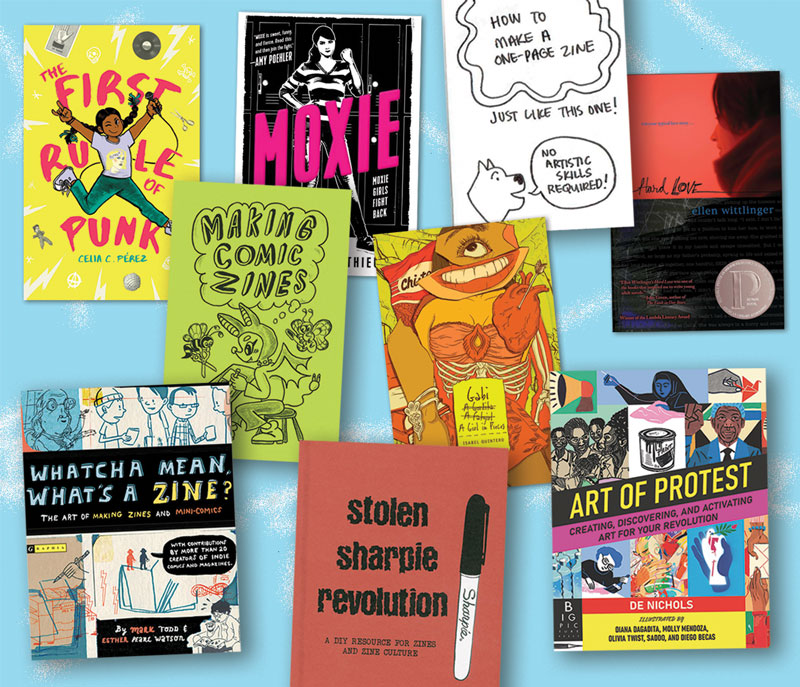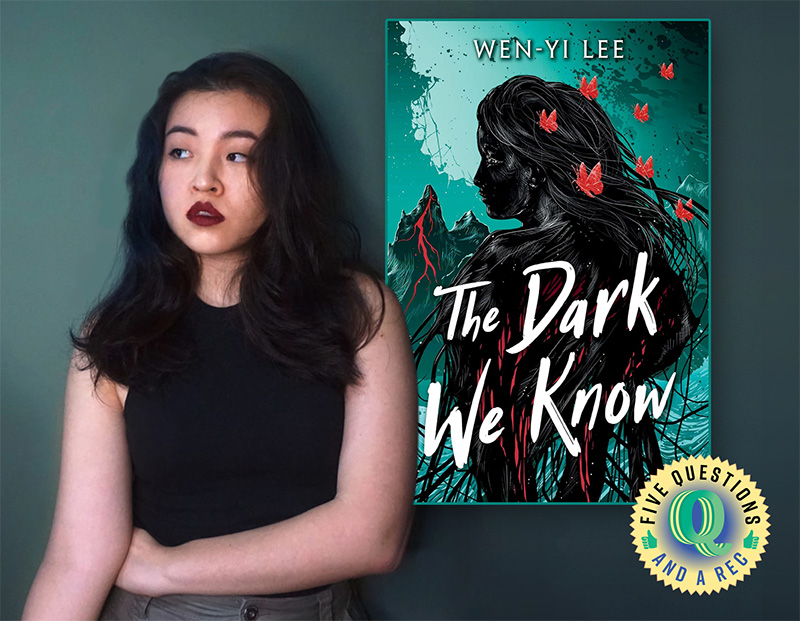Exploring History, Commemorating PRIDE with Stonewall: A Building. An Uprising. A Revolution.
Stonewall: A Building. An Uprising. A Revolution.

Written by Rob Sanders, illustrated by Jamey Christoph
Published by Random House
ISBN: 978-1-5247-1952-4
Grades 3 and Up
Book Review
Too few nonfiction picture books provide upper elementary readers with information about LGBTQIA individuals here in the U.S., around the world, and throughout history. While there are still too few fictional board books and picture books about LGBTQIA children and/or children’s LGBTQIA families, there is a growing body of excellent work. There is also a small, but growing body of middle grade and young adult fiction featuring LGBTQIA protagonists and family members. This is the space that Stonewall: A Building. An Uprising. A Revolution begins to fill. Because of the range of experiences that have been documented about that important night, when LGBTQIA New Yorkers fought back against the police who were criminalizing their very identities, author Rob Sanders chose to convey the narrative about Stonewall from the perspective of the building itself. Sanders starts with the building’s origin as two stable houses in the 1840s, and ends with the Stonewall Inn, now a National Monument of the U.S. Park Service. In between, Sanders reveals the history of Greenwich Village, and the inn as a refuge for the LGBTQIA community. “Women and men, young and old, teenagers, transgender people, drag queens, veterans, business people, students, people of all colors, religions, and cultures, gathered, chatted, laughed, and danced under our roof” (unpaged). The frequent police raids are also documented, culminating in the raid on the night of June 28, 1969, when the crowd erupted and “the spark of anger grew into a smoldering resistance” (unpaged). Readers will note that Sanders often uses binary language to talk about gender and sexual identity, when such language could have been avoided. Christoph’s retro-style illustrations use contrast and shadow to evoke shifting moods throughout the book. But his predominantly cis-gendered figures, with their lithe bodies and chiseled features, too often look like they stepped out of a fashion magazine, rather than representing the full range of human physical types. As the first picture book on Stonewall, timed for the 50th anniversary, Stonewall: A Building. An Uprising. A Revolution provides teachers, librarians, parents, and children with an entry point into the history of the Gay Rights Movement, to be explored in the context of other books, those written and yet-to-be-written, and digital texts as well.
Teaching Ideas and Invitations
Personal Preparation. As an educator, if you feel that you don’t know enough about the history of the Stonewall Riot in 1969, and the emergence of the Pride Month and the Gay Rights Movement, consider watching the documentary created by New York City’s LGBT Community Center and the National Park Service as part of Stonewall Forever, an interactive Stonewall digital memorial.
ADVERTISEMENT
ADVERTISEMENT
Grades 3 and Up
Collective Resistance. One of the most fascinating and important aspects of the Stonewall Uprising is the fact that it was unplanned and collective. Explore other books that feature the collective energy of groups of people working together in response to danger or in order to effect change, rather than books that emphasize the heroic nature of individuals. Such books could include: Hands Around the Library: Protecting Egypt’s Treasured Books and A Sweet Smell of Roses. Discuss with students the difference between reading these books and reading individual biographies of leaders of movements. How does it impact their understanding of how change can be enacted? As a class, identify social justice issues in your school or larger community. Select a topic the class would most like to research. As students are learning more about their topic, have them concurrently begin to develop a plan of action to work for change. Depending on the age of your students, you may want to explore the documentary The People Speak, from Howard Zinn.org.
Exploring the Stonewall Book Award. Work with your school or public library to gather a range of age-appropriate titles from the Stonewall Book Award for Children’s and Young Adult Literature, from the American Library Association. Read aloud some titles, and allow others for students to explore during independent reading. What do students think about the characters and conflicts in these fiction and nonfiction books? Have students locate books that they have read independently during the year that share some of the same themes, and curate this booklist to make available at the school or public library for other readers.
Nonfiction or Historical Fiction? Sanders chose to narrative the book from the first person perspective of the Stonewall Inn. Can the book still be considered nonfiction? Does it push the boundaries too much and therefore has to be considered historical fiction? Or a hybrid form of fiction and nonfiction? Have your students read Stonewall: A Building. An Uprising. A Revolution alongside other recently published nonfiction picture books and picture book biographies. Ask your students if the books fall clearly within the boundaries of what we think of conventionally as nonfiction, or whether the books blur the lines between fiction and nonfiction. For more thinking on the ways in which authors are using attributes of fiction and nonfiction in their picture book writing, see this November 2017 Classroom Bookshelf entry, “Post Orbis Pictus Nonfiction Musings”
Buildings and Resistance. For years, the Stonewall Inn served as a relatively safe haven for the LGBTQIA community in New York City (when not enduring police raids). Read aloud Stonewall: A Building. An Uprising. A Revolution along with other books that showcase buildings that serve as safe harbors for people avoiding persecution, such as The Grand Mosque of Paris: A Story of How Muslims Saved Jews During the Holocaust, Nasreen’s Secret School, The Tree in the Courtyard: Looking through Anne Frank’s Window, and Underground. After reading and discussing the various texts, have your students compare and contrast what the buildings have in common, and what the people using them have in common with one another.
Continuity and Change: Snapshots of a Building. Author Rob Sanders uses the voice of the building itself to narrate the history of the Stonewall Inn, culminating in the police raid and LGBTQIA resistance on June 28, 1969. What buildings have served different purposes in your community? What has changed and what has stayed the same about the roles of those buildings? If possible, do a walking tour of the community and see what buildings students are curious about. Next, work with your local historical society to identify sources (photos, news stories, etc.), connected with those and other buildings in your community. Have students create posters, 3-D models, or websites of the buildings using photographs, drawings, and their own original text to discuss the uses of each building over time by varying community members. As a model for how to do this multimodal work, have your students explore the Virtual Tour of the Tenement Museum in New York City.
Critical Literacy
Grades 9-Up
ADVERTISEMENT
ADVERTISEMENT
Visibility in Stonewall. On her Book Toss blog, Dr. Laura Jiménez has critiqued Stonewall: A Building. An Uprising. A Revolution’s dominant focus on cis-gender white gay men and lesbian women at the expense of “trans women of color, and the butch women and femme men,” (Jiménez, June 4, 2019). Specifically, Jiménez highlights Stormé DeLarverie, Marsha Johnson, and Sylvia Rivera, women at the forefront of the action on June 28, 1969. After reading Stonewall: A Building. An Uprising. A Revolution, have your students read Dr. Jiménez’s critique along with reviews from Kirkus, Booklist, and Publisher’s Weekly. How does Jiménez’s critique allow your students to read the book differently? How do all of the reviews, collectively, have students think differently about the representation of power and privilege within the book? What else are they thinking about that may not have been a part of their initial response to the book? Explore the digital resources on Stonewall, listed below, for your students to get a more thorough and complex understanding of who is visible and who is invisible in the picture book representation.
Duet Reading: Since Stonewall. Read aloud Stonewall: A Building. An Uprising. A Revolution in order to provide students with a common introduction to the Stonewall Riots as a catalyst for the Gay Rights Movement. Next, have students explore Ann Bausum’s Stonewall: Breaking Out in the Fight for Gay Rights, which covers the events of 1969, but also provides readers with a continued history through the 1970s onward, including exclusionary federal policies like “Don’t Ask, Don’t Tell” and the Defense of Marriage Act. What do students learn in Bausum’s book that helps them to understand the more general outline of events provided in Sanders’ book? Who has included in Sanders’ book? Who was excluded? After students complete Bausum’s book, have them research contemporary challenges to LGBTQIA children, tweens, teens, and adults.
Stonewall, Civil Rights, and Intersectionality: Ask students to brainstorm what they know about the struggle for equal rights in the 20th century United States. Next, have them compare and contrast their prior knowledge with one another. What movements were mentioned by all? Some? Few? Next, explore why that is the case. Ask students to consider the source(s) of their knowledge. Did they learn this information from their school? Their family? Their religious community? Read aloud Stonewall: A Building. An Uprising. A Revolution, along with other picture books about rights movements during the twentieth century, such as the Black Freedom Movement with Voice of Freedom: Fannie Lou Hamer, Spirit of the Civil Rights Movement and Second Wave Feminism with Gloria Takes a Stand. Next, watch this six-minute PBS News Hour video segment from 2013, “How the Civil Rights Movement Launched the Fight for LGBT, Women’s Equality.” Have students select a movement to explore in-depth in nonfiction literature circles, using books such as Strike!: The Farm Workers’ Fight for Their Rights, Stonewall: Breaking Out in the Fight for Gay Rights, The Girl from the Tar Paper School: Barbara Rose Johns and the Advent of the Civil Rights Movement, and Feminism: Reinventing the F-Word. As students learn more about a specific movement, make sure you offer them opportunities to sit in jigsawed groups to discuss the ways in which they see intersectionality within the texts they are exploring. Finally, have students write personal reflections or record TED talks that document their thinking about identity, civil rights, and social justice as 21st century teens.
Duet Reading: Trans Rights and Protections Today. After reading Stonewall: A Building. An Uprising. A Revolution, ask your students to consider what they learned about the history of LGBTQIA rights, and then ask them to consider what they know about the rights of transgender people today. Have them consider the binary language use in Stonewall: A Building. An Uprising. A Revolution. Next, read this May 24, 2019 New York Times story, “Trump Administration Proposes Rollback of Transgender Protections.” On a federal level, what is the administration proposing, why, and on what basis? What kinds of transgender rights and protections exist in your state and local community? How trans-friendly is your school? Have students walk through the school, documenting how language and pictures are used to refer to gender and sexuality on bulletin boards, signs, bathrooms, locker rooms, etc. What other language can be used? What other signage could be used? Have students come up with list of suggested changes that they can share with your principal.
Further Explorations
Digital Resources
Jamey Christoph Official Website
“The ABCs of L.G.B.T.Q.I.A.+,” The New York Times, June 21, 2018/updated June 9, 2019
Stonewall Inn, National Park Service
Stonewall, National Park Service Foundation
Stonewall Forever: A Living Monument, NYC LGBT Community Center & the National Park Service
Stonewall OutLoud, StoryCorps 2019
NBC News Stonewall 50: The Revolution Four-Part Documentary Series
LGBT History of Greenwich Village, Greenwich Village Society for Historic Preservation
“Love and Resistance: Stonewall 50,” The New York Public Library
“Stonewall: When Resistance Became Too Loud to Ignore,” The New York Times
“Two Transgender Activists are Getting a Monument in New York,” The New York Times
“New Children’s Book Tells Story of the 1969 Stonewall Uprising,” NBC News
Stonewall Book Award for Children’s and Young Adult Literature, American Library Association
Books
Bausum, A. (2015). Stonewall: Breaking out in the fight for gay rights. New York: Viking.
Brimner, L.D. (2014). Strike!: The farm workers’ fight for their rights. Honesdale, PA: Calkins Creek.
Evans, S. (2011). Underground. New York: Roaring Brook Press.
Higgins, N. A. (2016). Feminism: Reinventing the f-word. Minneapolis, MN: Twenty-First Century Books.
Johnson, A. (2005). A sweet smell of roses. Illus. By E. Valasquez. New York: Simon and Schuster Books for Young Readers.
Kanefield, T. (2014). The girl from the tar paper school: Barbara Rose Johns and the advent of the Civil Rights Movement. New York: Abrams Books for Young Readers.
Madrone, K. H. (2018). LGBTQ: The survival guide for lesbian, gay, bisexual, transgender, and questioning teens. Rev. 3rd Edition. Minneapolis, MN: Free Spirit Publishing.
Pittman, G. (2019). The Stonewall Riots: Coming out into the streets. New York: Abrams.
Rinker, J.M. (2019). Gloria takes a stand. Illus. D. Peoples-Riley. New York: Bloomsbury Children’s Books.
Roth, S. and Abouraya, K. L. (2012). Hands around the library: Protecting Egypt’s treasured books. New York: Dial Books for Young Readers.
Weatherford, C. B. (2015). Voice of freedom: Fannie Lou Hamer, spirit of the Civil Rights Movement. Illus. E. Holmes. Somerville, MA: Candlewick Press.
Filed under: Announcements
About Mary Ann Cappiello
Mary Ann is a professor of language and literacy at Lesley University. A former public school language arts and humanities teacher, she is a passionate advocate for and commentator on children’s books. Mary Ann is the co-author of Teaching with Text Sets (2013) and Teaching to Complexity (2015) and Text Sets in Action: Pathways Through Content Area Literacy (Stenhouse, 2021). She has been a guest on public radio and a consultant to public television. From 2015-2018, Mary Ann was a member of the National Council of Teachers of English's Orbis Pictus Award for Outstanding Nonfiction (K-8) Committee, serving two years as chair.
ADVERTISEMENT
ADVERTISEMENT
SLJ Blog Network
One Star Review, Guess Who? (#211)
Cover Reveal and Q&A: Dusti Bowling’s Latest – The Beat I Drum (Apr 2025)
Kevin McCloskey on ‘Lefty’ | Review and Drawn Response
Notable NON-Newbery Winners: Waiting for Gold?
The Seven Bills That Will Safeguard the Future of School Librarianship
Take Five: Newbery Picks, Part Two
Gayle Forman Visits The Yarn!
ADVERTISEMENT



